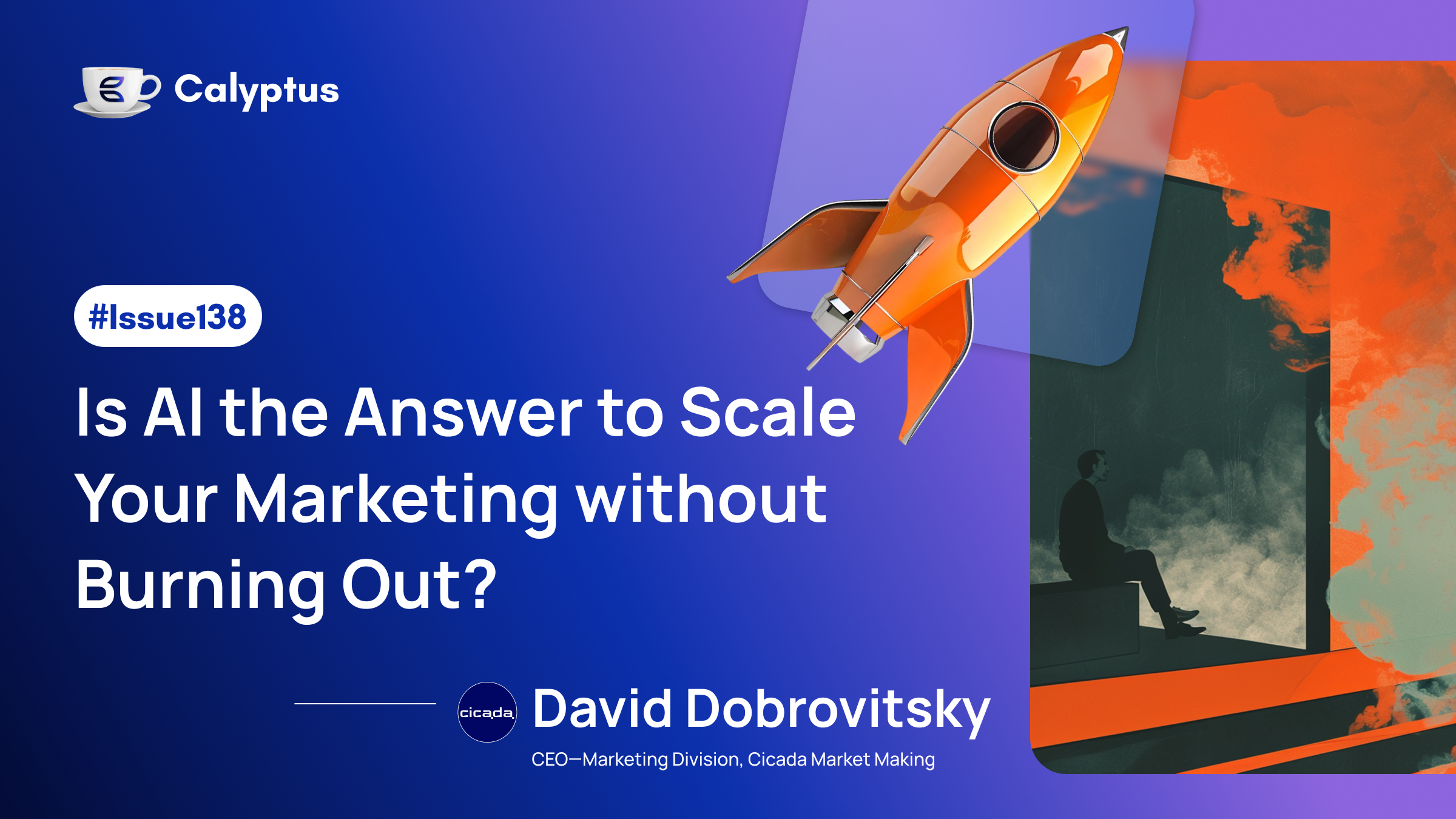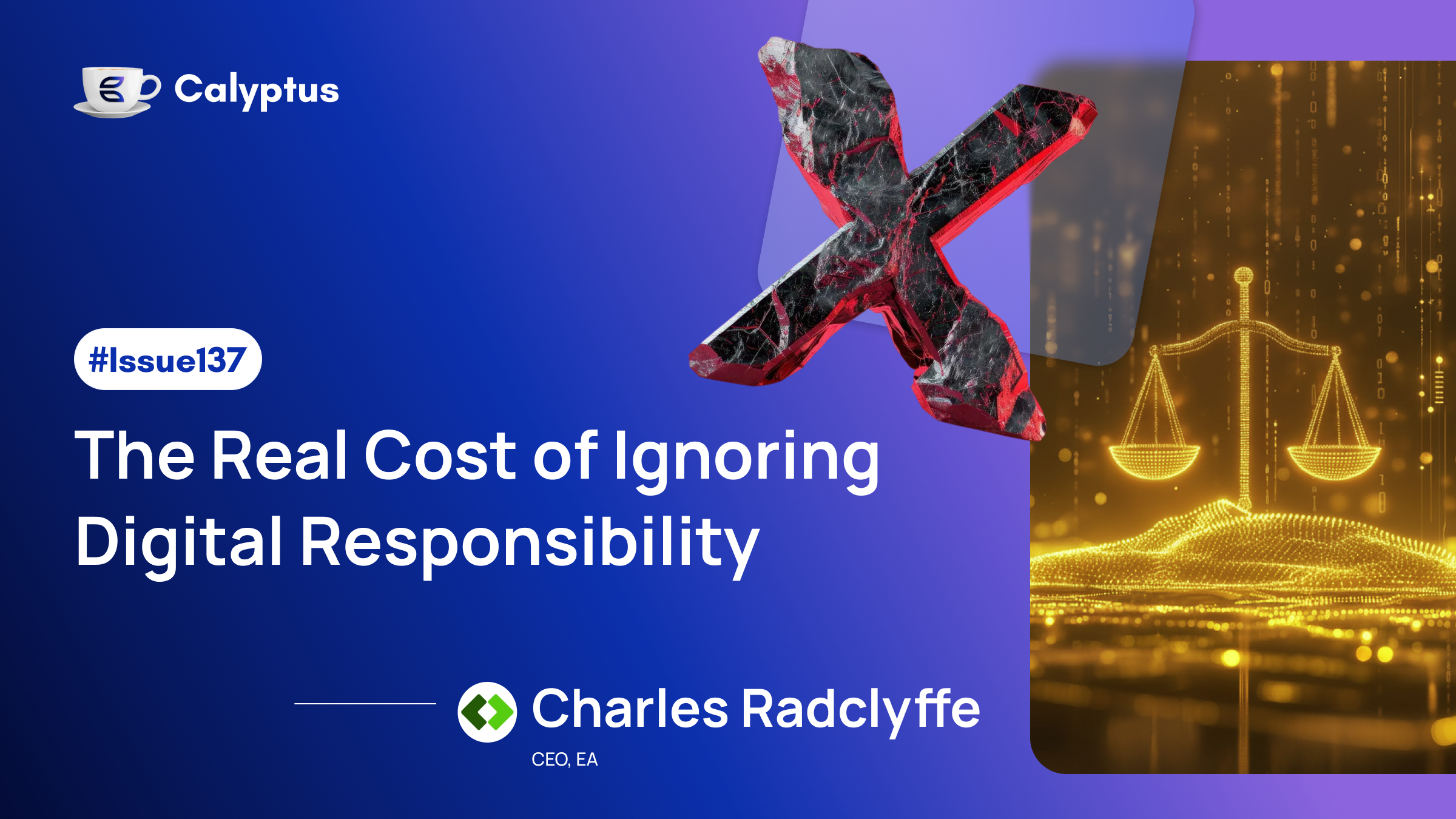This week on Coffee with Calyptus, we sit down with Mike Sorrenti, founder of Game Pill, a pioneering interactive studio that’s been shaping digital experiences for over 25 years. From early TV tie-ins for Nickelodeon and Marvel to today’s AI-driven worlds, Mike shares how the industry has evolved and how brands are finally treating interactive content as core, not complementary.

You've been running Game Pill for 25 years. What's the biggest shift in how big brands like Nickelodeon or Marvel approach interactive content today versus when you started?
When I started most brands were beginning to figure out interactive. We would be commissioned to make companions to television shows and promotional content. Television was seen as the driver and interactive was an additive experience. As time went on brands became more savvy. Many began to license and had learnings from their licensing as the years passed. Eventually the brands began hiring dedicated staff to handle both interactive production and sales and licensing. Now interactive is much more integrated into pipelines however there are still instances where brands are not ready for the appetite of the consumer and do not have enough digital content ready. Brands are also much better at testing out new platforms like Roblox, etc. than they used to be and realize that they must have interactive content where the biggest audiences gather. This is difficult at times because some areas and new technologies have smaller audiences and it is difficult to judge where resources should go prior to the launch of a new platform, or hardware.
You're juggling Game Pill's client work, advising UG Labs on safe AI for kids. How do you decide which partners get your attention when a new project brief lands on your desk?
It is a difficult decision. Typically we choose what we think will have the most impact and the projects we think we can do best. There is so much amazing new technology such as Augmented Reality and the Meta and Snap offerings. We very much want to experiment with all the new technologies but we must do so in a very careful way and have to be careful to be both not too ahead or behind the curve. We typically like to do small experiments with upcoming technologies but because the audiences are either unknown or small we cannot invest as much as we would like because there is a high risk of no financial returns.
How is Game Pill adopting AI tools internally, are you using LLMs for game design, automating QA, etc?
We have been building AI tools more than we have been using AI. That said, we have been experimenting with all of what is available such as image generation, video generation, 3d model generation, and LLMs to help with market segment research and other strategy decisions. The tools are changing daily and it is hard to keep up but we do try to test a new tool every couple of weeks. I am also a big fan of local secure LLMs that run on our own hardware for the privacy, security and speed.
From interactive TV applications to digital twins and virtual reality installations, you have experience building across every conceivable platform. If you were pitching an interactive project to a brand today, what would compel them to say, "Yes, we need this"?
When pitching an interactive project to a brand today, I focus less on the platform and more on the emotional connection it creates with the brand. Each brand has a soul and the most important thing is to create experiences that align with the brand. The Barbie brand is a lot different than say GI JOE. And that is what makes it special. Staying on brand and giving participants a feeling of connection, laughter, etc. is what makes the best experiences.
Technology changes constantly, but what never changes is our desire to feel something real and to connect with others through it.
I notice you are an advisor and mentor to several organizations. What is it about that work that attracts you?
I’ve always enjoyed working with emerging talent and new ideas, which is why I serve as an advisor and mentor to several organizations. Over the years, I’ve worked with a number of school game programs as a program advisor, helping students bridge the gap between creative design and real-world production. I’m also a startup mentor at Florida Atlantic University and Miami University, where I guide founders and student teams through the process of validating ideas, refining their business models, and preparing for growth.
What attracts me most to this work is the energy and curiosity that students and early-stage founders bring to the table. Offering feedback and helping them navigate their next steps not only feels rewarding — it also keeps me sharp. Mentoring forces me to stay current with new technologies, market trends, and the way younger creators think about innovation and problem-solving.
Beyond that, I find that mentorship creates a two-way learning exchange. I may be helping others accelerate their growth, but I’m also constantly inspired by their creativity and boldness. That combination of teaching, learning, and discovery is what keeps me coming back.
For UG labs specifically, what attracted you to their mission?
What really attracted me to UG Labs’ mission is their focus on building safe, imaginative AI experiences designed specifically for how children learn and play. Having spent much of my career creating interactive entertainment and educational products for kids via companies like Disney, Nickelodeon, Discovery Channel, National Geographic, and Fisher-Price, I immediately connected with their belief that technology for children should be built with purpose and care.
I’ve always loved creating products and with UG Labs, I’ve been able to bring that experience to help shape how their conversational AI products connect with young audiences. It’s incredibly rewarding to collaborate with a team that combines innovation, empathy, and developmental insight to create something genuinely new.
What makes the mission especially meaningful to me is UG Labs’ commitment to ethical and emotionally intelligent AI. They’re not just advancing technology; they’re redefining what positive, safe, and creative interaction between children and AI can look like.
We hope you enjoyed this edition of Coffee with Calyptus. Stay curious, stay inspired, and keep building what matters. Explore more editions and insightful articles at .

.png)


